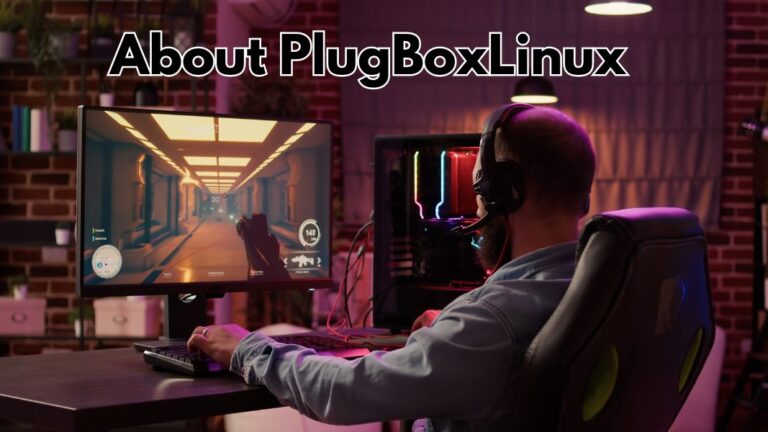Introduction
plugboxlinux about: In the vast world of Linux distributions, few stand out for their simplicity and powerful features like Plugbox Linux. This lightweight, Arch-based distribution is tailored for advanced users who crave control and efficiency. In this article, we’ll delve into what makes Plugbox Linux a preferred choice for those who want a streamlined experience without compromising on performance.
What is plugboxlinux about?
Plugbox Linux is a minimalist, Arch-based Linux distribution designed for users who prefer a no-frills, efficient computing environment. It is particularly popular among those who have experience with Linux and are looking for a system that they can fully customize. Unlike other distributions that come with a pre-installed desktop environment, Plugbox Linux provides a basic setup that allows users to build their system from the ground up.
Why Choose Plugbox Linux?
There are several reasons why advanced users might choose Plugbox Linux over other distributions:
- Minimalism: plugboxlinux about offers a minimalistic approach, allowing users to install only what they need. This means less bloatware and more control over the system’s resources.
- Customization: Being Arch-based, Plugbox Linux provides users with the flexibility to customize their system extensively. Whether it’s the desktop environment, package manager, or kernel, you have the freedom to choose.
- Efficiency: With its lightweight nature, Plugbox Linux ensures that your system runs smoothly even on older hardware. This makes it an excellent choice for those who want to revive older machines.
- Arch User Repository (AUR): One of the standout features of Plugbox Linux is its access to the Arch User Repository. This vast collection of software packages allows users to install a wide range of applications easily.
Installing Plugbox Linux

The installation process of plugboxlinux about might seem daunting to beginners, but it is straightforward for those familiar with Arch Linux. Here’s a quick overview of the steps involved:
- Download the ISO: Begin by downloading the Plugbox Linux ISO from the official website.
- Create a Bootable USB: Use tools like Rufus or Etcher to create a bootable USB drive with the Plugbox Linux ISO.
- Boot from USB: Insert the USB drive into your computer and boot from it.
- Partition Your Disk: Use tools like
cfdiskorfdiskto partition your disk according to your needs. - Install the Base System: Once the disk is partitioned, use the
pacstrapcommand to install the base system. This will include the Linux kernel, core utilities, and other essential components. - Configure the System: After the base system is installed, configure your system by setting up the hostname, network, and other necessary settings.
- Install a Bootloader: Finally, install a bootloader like GRUB to manage your system’s startup process.
- Reboot and Enjoy: Once the installation is complete, reboot your system, and you’ll be greeted with your new Plugbox Linux installation.
Customizing Plugbox Linux
One of the key reasons advanced users opt for Plugbox Linux is the ability to customize their system extensively. Here are some common customizations:
- Desktop Environment: Plugbox Linux does not come with a pre-installed desktop environment, giving you the freedom to choose one that suits your needs. Popular options include GNOME, KDE Plasma, XFCE, and i3.
- Package Management: As an Arch-based distribution, Plugbox Linux uses the
pacmanpackage manager, which is known for its speed and efficiency. You can also access the Arch User Repository (AUR) to install a wide range of software packages. - Kernel Customization: Advanced users can choose to customize the Linux kernel in Plugbox Linux. This allows you to optimize the system for specific hardware or workloads.
- System Services: Plugbox Linux gives you control over which system services run at startup. This can significantly reduce boot time and improve overall system performance.
Plugbox Linux for Developers
Plugbox Linux is not just for general users; it’s also a great platform for developers. Its lightweight nature and access to a vast array of development tools make it an excellent choice for coding, testing, and deploying applications.
- Development Environments: Plugbox Linux supports a wide range of development environments, from Python and Java to C++ and Ruby. With access to the Arch User Repository, developers can easily install the latest versions of their preferred tools.
- Version Control: Plugbox Linux integrates seamlessly with version control systems like Git, making it easy for developers to manage their codebases.
- Docker and Virtualization: Developers can also take advantage of Docker and other virtualization tools to create isolated environments for testing and deployment.
Plugbox Linux Community and Support
The Plugbox Linux community is small but active. Users can find support through forums, IRC channels, and the Arch Wiki, which contains detailed documentation on everything from installation to troubleshooting. Being part of the Arch ecosystem means that most solutions for Arch Linux will also apply to Plugbox Linux.
Conclusion
plugboxlinux about is a powerful, minimalist Linux distribution that offers advanced users the control and efficiency they crave. Its Arch-based roots provide a solid foundation, while its lightweight nature makes it perfect for both old and new hardware. Whether you’re a developer, a power user, or simply someone who values simplicity, Plugbox Linux has something to offer.
By choosing plugboxlinux about you’re opting for a distribution that puts you in the driver’s seat, allowing you to build a system tailored to your exact needs. If you’re ready to take control of your computing environment, Plugbox Linux is the perfect starting point.










































